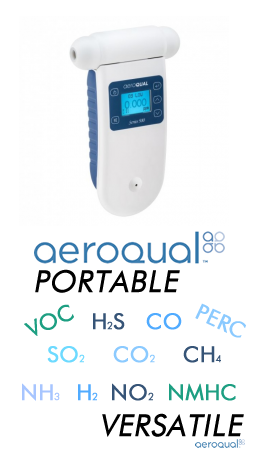Hydrogen Sulfide Information

Hydrogen Sulfide:
|
Other Names |
Hydrosulfuric Acid; Sulfane; Dihydrogen Monosulfide |
|
Chemical Formula |
H2S |
|
CAS Number |
7783 – 06 – 4 |
|
Industry Uses |
Chemical Laboratories; Metallurgy |
|
Health Risks |
Irritation of eyes and mucous membranes; Convulsions; Headaches, Dizziness |
|
Vapor Pressure |
17.6 atm |
|
Water Solubility |
Insoluble |
|
Flammability |
Flammable |
|
Odor |
Rotten Eggs |
What is Hydrogen Sulfide:
Hydrogen Sulfide is colorless, has an odor of rotten eggs, and is highly toxic. Although the odor is very pungent at first, it quickly deadens the sense of smell, so victims may be unaware of its presence until it's too late. Hydrogen Sulfide is flammable, naturally occurring in crude petroleum, natural gas, volcanic gas, and hot springs. It is sometimes called “sewer gas”. Biogas generators may release up to 1% hydrogen sulfide in gas streams. Any process that breaks down organic material without oxygen has the potential to create high levels of hydrogen sulfide. If heated under pressure it will explode. It is produced in the human body by bacteria in the mouth and gastrointestinal tract. Hydrogen Sulfide is very toxic to aquatic life and leaves long-lasting damage.
Hydrogen Sulfide Exposure and Health Risks:
Hydrogen Sulfide is toxic and flammable. It is an irritant, causing inflammation and irritation to eyes and respiratory system. Eye pain, conjunctivitis, photophobia, corneal vesiculation and lacrimation (discharge of tears) are effects of Hydrogen Sulfide on the eyes. Dermal burns can result from direct contact. Inhalation can cause dizziness, headaches, insomnia, and fatigue. Gastrointestinal disturbances may occur as well. Hydrogen sulfide causes serious damage to organs and central nervous system, and it can be fatal if inhaled.
Regulations:
The table below summarizes the most-recent exposure limits.
|
Limit/Level |
Type |
Organization |
|
0.33 ppm |
AEGL-1 (8 hrs) |
EPA |
|
17 ppm |
AEGL-2 (8 hrs) |
EPA |
|
31 ppm |
AEGL-3 (8 hrs) |
EPA |
|
20 ppm |
C (10 min) |
OSHA |
|
10 ppm |
C (10 min) |
NIOSH |
Measuring Hydrogen Sulfide:
Hydrogen Sulfide concentration in the air can be measured in units of parts per million (ppm). Many of our products have digital communication capabilities for easy monitoring and control. We carry portable and fixed hydrogen sulfide monitors and kits. All of our hydrogen sulfide products can be viewed HERE.
What type of component are you looking for?
| Fixed Mount | Handheld | Dissolved Kits: | Replacement Sensors: | Calibration Gas: | Rentals: |
 |
 |
 |
 |
 |
 |
All sensors require a yearly calibration to ensure your gas measurements are accurate and performing within manufacturer standards. This page is desiccated to the individual manufacturers we represent and their specific calibration procedures.
**Calibration Service Request Form **
|
Calibration costs do vary, see below to get an estimate: Calibration Fee: $150 Analyzer Calibration Fee: $300 PM Calibration Sensor Fee: $330 Genie Calibration Fee: $265 ATI Calibration Fee: $205 ** note that prices are subject to change per labor and parts required. |
Contact us for help choosing the right monitor for your application

















